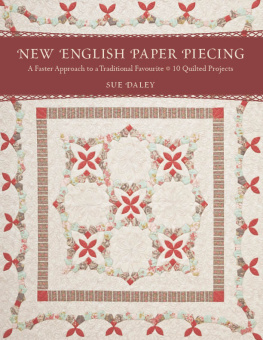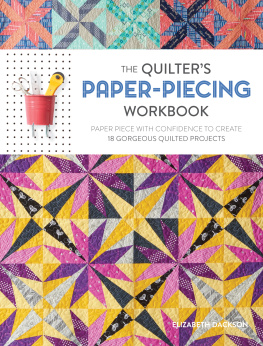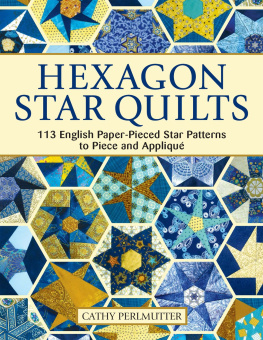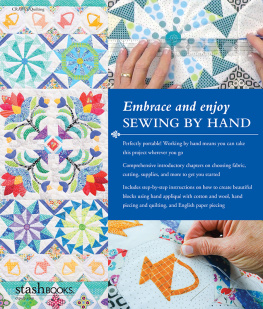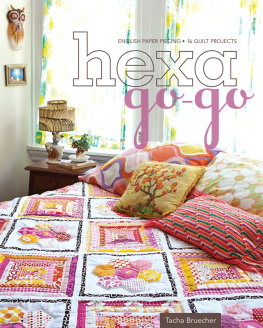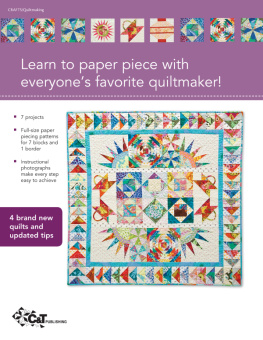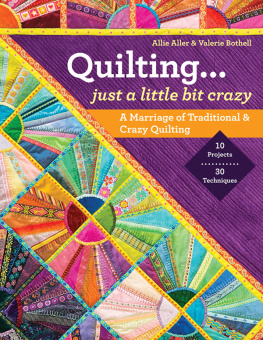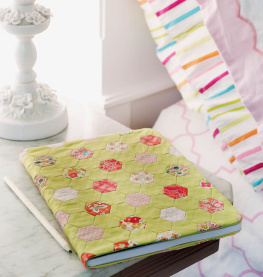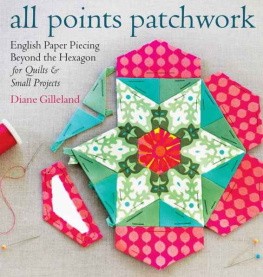
Text copyright 2011 by Sue Daley
Photography and Artwork copyright 2011 by C&T Publishing, Inc.
Publisher: Amy Marson
Creative Director: Gailen Runge
Acquisitions Editor: Susanne Woods
Editor: Karla Menaugh
Technical Editors: Teresa Stroin and Amanda Siegfried
Cover Designer: April Mostek
Book Designer: Kerry Graham
Page Layout Artist: Casey Dukes
Production Coordinator: Jessica Jenkins
Production Editor: S. Michele Fry
Illustrator: Aliza Shalit
Photography by Christina Carty-Francis and Diane Pedersen of C&T Publishing, Inc., unless otherwise noted
Published by C&T Publishing, Inc., P.O. Box 1456, Lafayette, CA 94549
All rights reserved. No part of this work covered by the copyright hereon may be used in any form or reproduced by any meansgraphic, electronic, or mechanical, including photocopying, recording, taping, or information storage and retrieval systemswithout written permission from the publisher. The copyrights on individual artworks are retained by the artists as noted in New English Paper Piecing. These designs may be used to make items only for personal use or donation to nonprofit groups for sale or for display only at events, provided the following credit is included on a conspicuous label: Designs copyright 2011 by Sue Daley from the book New English Paper Piecing from C&T Publishing, Inc. Permission for all other purposes must be requested in writing from C&T Publishing, Inc.
Attention Copy Shops: Please note the following exceptionpublisher and author give permission to photocopy .
Attention Teachers: C&T Publishing, Inc., encourages you to use this book as a text for teaching. Contact us at 0011 + 1 +925-677-0377 or www.ctpub.com for lesson plans and information about the C&T Creative Troupe.
We take great care to ensure that the information included in our products is accurate and presented in good faith, but no warranty is provided nor are results guaranteed. Having no control over the choices of materials or procedures used, neither the author nor C&T Publishing, Inc., shall have any liability to any person or entity with respect to any loss or damage caused directly or indirectly by the information contained in this book. For your convenience, we post an up-to-date listing of corrections on our website (www.ctpub.com). If a correction is not already noted, please contact our customer service department at or at P.O. Box 1456, Lafayette, CA 94549.
Trademark () and registered trademark () names are used throughout this book. Rather than use the symbols with every occurrence of a trademark or registered trademark name, we are using the names only in the editorial fashion and to the benefit of the owner, with no intention of infringement.
Library of Congress Cataloging-in-Publication Data
Daley, Sue (Sue Jennifer), 1956
New English paper piecing : a faster approach to a traditional favourite--10 quilted projects / Sue Daley.
p. cm.
ISBN 978-1-60705-404-7 (soft cover)
1. Quilting--Patterns. 2. Appliqu--Patterns. I. Title.
TT835.D344 2011
746.46041--dc23
2011022155
Printed in China
10 9 8 7 6 5 4 3 2 1

ACKNOWLEDGMENTS
To my wonderful staff, who always deliver and try to keep me focusedmost of the time.
To Leanne Lawrence, who always manages to do an amazing job machine quilting my quilts with such short notice.
To Karla Menaugh, my editor, who was always waiting in the wings with the answers I needed.

DEDICATION
To my family, for all those years of understanding the meaning of the word deadline.
To my husband, Jim, for the constant support and help every step of the way.
To my four children, Ryan, Corey, Shannon, and Jarad, for being my biggest fans and for all your help over the years. Thanks for your understanding and support when my professional quilting life was so busy that I forgot to pick you up or was away for an important event in your life.
You have all contributed so much to enable me to work in a field that I love.

WE HAVE COME A LONG WAY
English paper piecing dates back to the early 1800s. While many beautiful designs could be created from the traditional hexagons, the process was very time-consuming. To begin a project, paper hexagons were cut from old letters or ledgers. Then each fabric shape, including a " seam allowance, was cut individually with scissors. After the fabric pieces were thread-basted onto paper hexagons, they were whipstitched together. One quilt could take years to finish by hand.
Today the basic principles are the same, but technology has provided time-saving tools and materials for every step of the paper-piecing process. Todays patchworkers, with their busy schedules, can still achieve a handmade English paper-pieced quilt by using these time-saving tools:
Basic precut paper shapes, available in many different shapes and sizes
Acrylic templates with a built-in seam allowance, making it possible to rotary cut multiple fabric shapes at once
Rotating cutting boards, saving steps in the rotary-cutting process
A fabric glue pen, making it possible to replace time-consuming thread-basting with quick glue-basting; this tool alone cuts preparation time by at least half.
WELCOME TO MY WORLD OF ENGLISH PAPER PIECING
I was always turned off by how visible the whipstitched seams were on the front of English paper-pieced quilts. I was taught as a young child, If you cant do it right, then dont do it. In my mind, those unsightly lines of whipstitching just werent right.
When I switched to a thin, strong polyester thread, I found that I could solve two problems at once. The thread is so fine and strong that it sinks into the fabric, practically becoming invisible on the front of the quilt. And unlike cotton thread, it doesnt shred as it is being pulled across the top of the cards during the whipstitching process.
ITS NOT JUST ABOUT HEXAGONS
Grandmothers Flower Garden is one of patchworks oldest, dearest, and most frequently sewn designs. The design is based on a hexagon, which has six sides. In days gone by, these quilts were an allover pattern, made completely of hundreds and thousands of hexagons. Today you will still see people making these beautiful quilts.
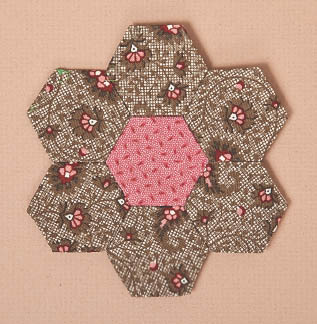
Hexagon flower block
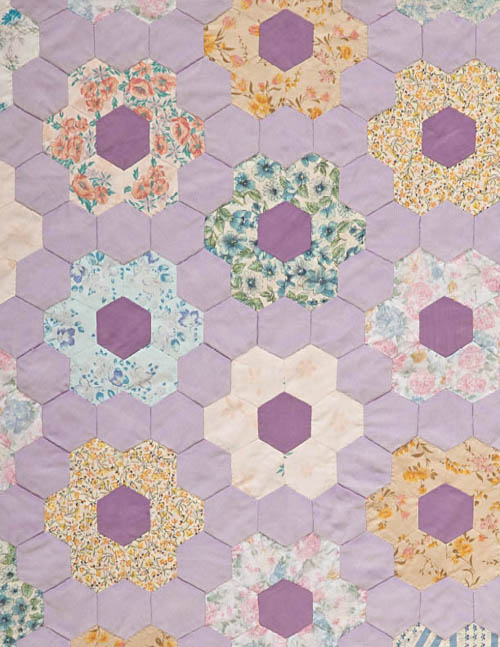
Detail of Grandma Rosies quilt ()
English paper piecing has predominantly been about hexagons, or occasionally six-pointed stars, octagons, or squares.
Today, English paper piecing can work with almost any shape. A wide variety of shapes, in many different sizes, will interlock just like a jigsaw puzzle. If the paper shapes fit together, their fabric counterparts can be sewn together.
There are endless possibilities! By combining my love of English paper piecing with my other passions, needle-turn appliqu and embroidery, I can introduce you to new possibilities for quilt design.
Next page
